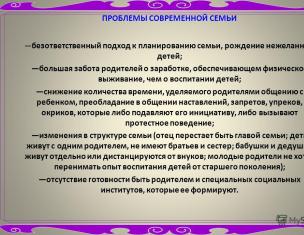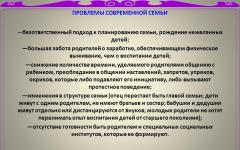Constitution of the Russian Federation 1993- the basic law adopted by a general referendum. It expresses the will of the people and consolidates the key provisions of the state system. Constitution of the Russian Federation 1993. - a modern and up-to-date version of the country's basic law. Consider further the specifics of this document.
Basic information
When considering the legal structure of the state, first of all it is given. This legal document acts as the basis of order and legality in the country. It is in this form that this normative act is considered by science. Together with that interpretation of the Russian Constitution allows us to conclude that it is a political document. This is due to the fact that this act has a regulatory influence on society. The key functions of the Basic Law are:
- Organizational.
- Educational.
- Legal.
- Stabilizing.
- Constituent.
- Political.
General characteristics of the Constitution of the Russian Federation
The Basic Law has a number of features in which it differs from other normative documents. First of all, it should be noted the order of its adoption. As mentioned above, in 1993 a decision was made to organize a referendum on the draft Constitution.
As a result, on December 12, it was adopted The Constitution of the Russian Federation. 2016 became the 23rd year of its existence. In the Federation Council, on the eve of the celebration of the day of the adoption of the basic law, they noted that the document is adequate to the existing conditions and does not need to be corrected and supplemented.
Form of government
General characteristics of the Constitution of the Russian Federation allows you to get a clear idea of the type of state structure of the country. The Basic Law provides a concise and at the same time capacious definition. In particular, the act states that the Russian Federation is a democratic legal federal state with a republican form of government.
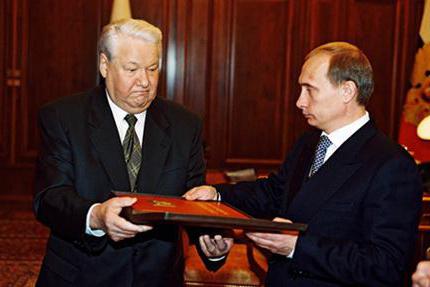
The president
The fact that Russia is not a parliamentary republic is quite obvious. At the same time, experts are in no hurry to call it presidential in its classical form. This position is due to the fact that the head of the country is endowed with fairly broad powers.
The special status of the President secures The Constitution of the Russian Federation. 2016 the year showed how the head of state exercises the powers vested in him by law. Here one should refer to Art. 80. It says that the president determines the foreign and domestic political directions of state policy. The events abroad showed the ability of the head of the country to take responsibility for what is happening, to competently coordinate the actions of state representatives in the international arena.
Similar conclusions can be drawn if we turn to domestic politics. The President constantly monitors the situation in the country, making operational decisions, decrees, and giving instructions.
Territorial features
General characteristics of the Constitution of the Russian Federation allows you to understand the specifics of the geographical structure of the country. The Basic Law combines exclusively territorial and national principles of federal organization. At the same time, the equality of administrative units and political entities is guaranteed. In Art. 5 says that Russia consists of territories and regions, including autonomous ones, and republics. All of them act as equal subjects of the country.
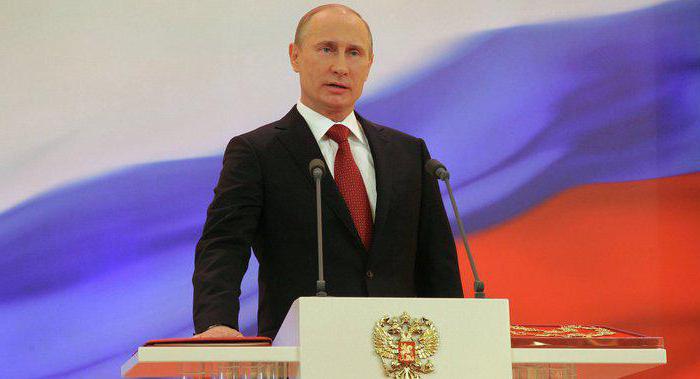
Essence of the Basic Law
The essence of the Constitution of the Russian Federation consists in the formation of a regulatory framework for the adoption of laws and other legal documents aimed at protecting the state system, the interests of society, the sovereignty and integrity of the country. It is these acts that concretize the provisions of the basic law. IN tasks of the Constitution of the Russian Federation includes providing guarantees to the population in the implementation of all their legal opportunities on equal terms.
Legal role
Interpretation of the Constitution of the Russian Federation is of particular practical importance. It is necessary for the population to understand, first of all, their capabilities and responsibilities, the powers of authorities at all levels. Constitutional provisions act as the highest material criterion of the law existing in the country. Everything that is present and arises in it must comply with the norms of the basic law.
The text of the Constitution contains indications of the key principles of law. These include, in particular, democracy, humanism, equality of subjects before the law, mutual responsibility of the individual and the state. Constitutional provisions have immediate effect. They are applicable to all courts and other jurisdictional structures.
Articles of the basic law can be referred to when making decisions, when motivating certain legal acts. Constitutional provisions act directly if certain relations are regulated by them and they are sufficient to resolve a particular situation. The Basic Law thus acts as the core of the regulatory system.
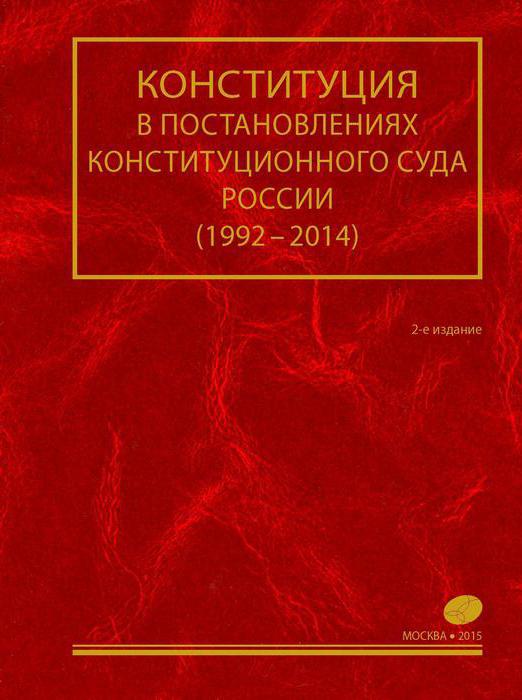
Constituent function
The emergence of the Constitution is due to fundamental changes in public life. Over time, the basic law became the political and normative basis for social development. The Constitution of 1918 consolidated the achievements of the socialist revolution. The law of 1937 fixed the foundations for building the state system. The document, adopted in 1978, reflected the features of building an already developed socialism.
The current Constitution does not contain an indication of the nature of the social order. It consolidates the foundations of the state structure as a whole. The principle of separation of powers in the entire history of the existence of the state was fixed precisely by the modern The Constitution of the Russian Federation. Protection of citizens while it is far from last. Protection of the interests of the population is a priority direction of state policy.
Organizational role
Its essence lies in the regulation of the activities of state institutions at various levels. The Basic Law is designed to ensure the work of a balanced system of power, delineate the terms of reference, resolve the issue of removing the head of the country from office, resigning the government, dissolving the State Duma, and so on. Accordingly, the Constitution regulates and streamlines processes, regulates the functioning of public authorities, and defines models of behavior of subjects of law.
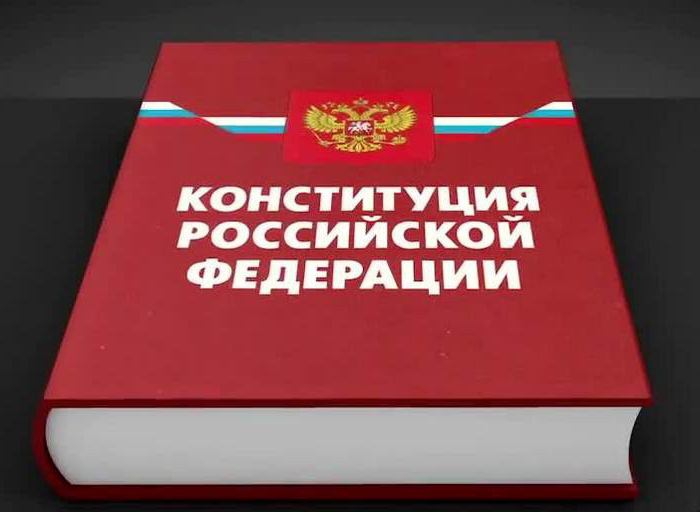
political function
It expresses the role of the basic law in the social structure. The constitution introduces political activity and the struggle for power within the legal framework. This function consists in both recognizing and strengthening ideological diversity and a multi-party system in society. Giving political currents equal opportunities in the process of struggle for power, the fundamental law prohibits actions related to the violent change of the foundations of the state system, undermining the country's security, creating illegal formations, inciting social, national, racial, religious conflicts.
Stabilizing role
The country's constitution ensures the stability of legal institutions. Stability in the state system is a guarantee of the peace of society. Constitutional provisions must have a certain conservatism for this. As practice shows, an excessively frequent change in the norms of the basic law indicates trouble in the state and society. Meanwhile, the stability of the Constitution does not indicate a stoppage of the legal process. Some authors point out that the basic law was adopted somewhat hastily and has many defects. Of course, there are certain flaws in the Constitution, but in general it is a guarantee of stability.
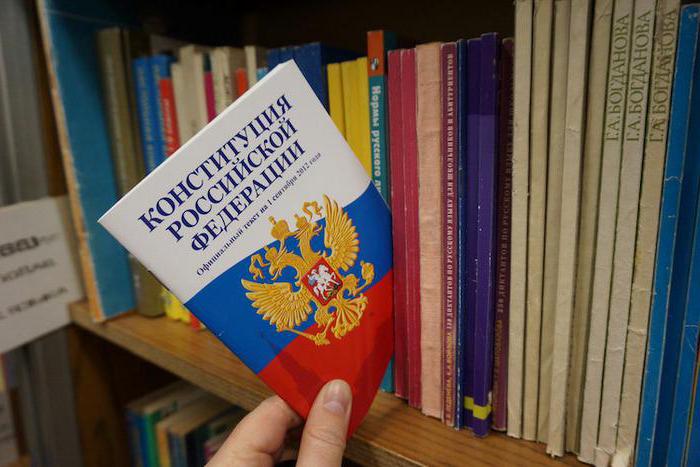
educational function
This role is considered one of the key. The effectiveness of the implementation of constitutional provisions depends on the degree of legal consciousness of the population. In this case, the rulemakers solve a rather complicated problem. It is important not only to formulate provisions. It is necessary to lay in them a tradition of respect for the Constitution, authorities, courts, citizens, society and the state as a whole. In this sense, the basic law in force today most fully fulfills the educational function.
Structure
Consider the list of provisions that the constitution of the Russian Federation contains. The rights and freedoms of subjects are determined by 48 articles. They all form Chapter 2 of the Basic Law. presented as the highest value of the state. The individual is guaranteed the preservation and realization of his legal possibilities on an equal basis with others.
Human rights in the Constitution of the Russian Federation called inalienable goods. At the same time, they exist in mutual connection with duties. Chapter 3 describes the federal structure. It contains 15 articles. They reinforce the key provisions of Chapter 1 of the system). Chapters 4-8 set out the principles of organizing local self-government and state power. The section dedicated to the President of the country contains 14 articles. They fix the status of the head of state, the procedure for taking office, powers, rules for their early termination, etc.
Chapter 5 covers the fundamentals of the organization and functioning of parliament. It contains 11 articles. The provisions establish the status of the FS, its structure, the rules for the formation, the competence of the chambers. Chapter 6 contains provisions relating to the government. They describe the procedure for the creation, structure, competence of this body and other points related to its functioning. Chapter 7 is devoted to the judiciary. It contains 12 articles. The provisions reveal the concept of the judicial system, the principles of the administration of justice, the rules for the formation and powers of the Constitutional Court, the Supreme Arbitration Court, the Supreme Arbitration Court, and the prosecutor's office.
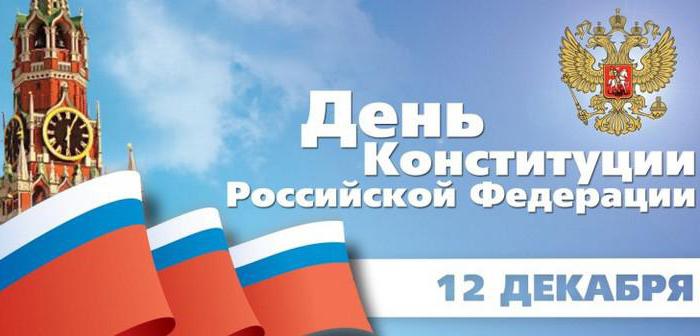
Chapter 8 specifies Article 12 of the Constitution. This section establishes the provisions relating to the system of territorial administration, the functions of local authorities. Chapter 9 defines the procedure for supplementing and amending the basic law, the rules for its revision (that is, the adoption of a new document). In the final and transitional provisions there are norms indicating a temporary withdrawal from the operation of some norms of the first part. They also set the date of adoption and entry into force of the basic law.
The final and transitional provisions establish that constitutional norms have priority over the Federal Agreement of March 31, 1992. It also determines the procedure for applying legislative and other normative acts that were adopted before the date the document came into force.



